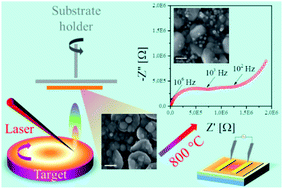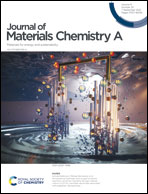High performance LATP thin film electrolytes for all-solid-state microbattery applications†
Abstract
The NASICON superionic solid electrolyte Li1+xAlxTi2−x(PO4)3 (LATP) with 0.3 ≤ x ≤ 0.5 remains one of the most promising solid electrolytes thanks to its good ionic conductivity and outstanding stability in ambient air. Despite the intensive research for bulk systems, there are only very few studies of LATP in a thin film form (thickness < 1 μm) and its implementation in all-solid-state batteries and microbatteries. The following study fills this gap by exploring the properties of high performance LATP thin films fabricated by large-area Pulsed Laser Deposition (PLD). The as-deposited thin films exhibit an ionic conductivity of around 0.5 μS cm−1 at room temperature (comparable to the state-of-the-art of LiPON) which increases to a remarkably high value of 0.1 mS cm−1 after an additional annealing at 800 °C. A possible cause for this significant enhancement in ionic conductivity by two orders of magnitude is the formation of a glassy, intergranular phase. The performance of both as-deposited and annealed LATP films makes them suitable as solid electrolytes, which opens the path to a new family of stable and high performance all-solid-state thin film batteries.



 Please wait while we load your content...
Please wait while we load your content...